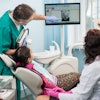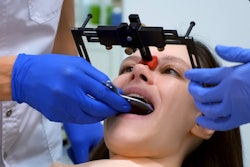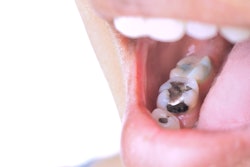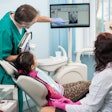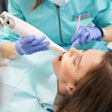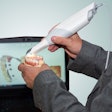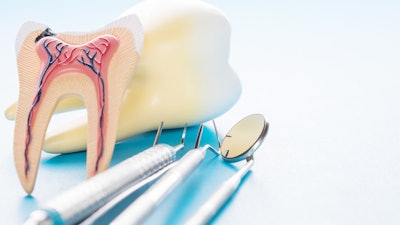
Dye-enhanced quantitative light-induced fluorescence (DEQLF) may effectively assess early enamel caries, reducing the need for subjective visual evaluations. This study was recently published in the Journal of Dentistry.
Furthermore, DEQLF results showed clear differences based on lesion activity and proved effective at distinguishing active from inactive lesions, the authors wrote.
"DEQLF offers a non-invasive, objective method for caries activity assessment in clinical settings,” wrote the authors, led by Seok-Woo Park of the Yonsei University College of Dentistry in the Republic of Korea (J Dent, September 13, 2024).
A total of 120 extracted teeth without fluorosis or enamel hypoplasia were collected from individuals with an average age of about 34 for periodontal, orthodontic, and prosthetic reasons. Seventy teeth with early enamel caries were included. Fluorescence changes (ΔΔG) were calculated using image analysis software. Receiver operating characteristic curve (ROC) curve analysis was performed to validate ΔΔG's ability to distinguish lesion activity based on the area under the ROC curve (AUROC).
Teeth were hydrated with distilled water for 60 seconds and then dehydrated using compressed air for 10 seconds. A fluorescent dye (100 μM fluorescein sodium in 50% ethanol) was applied for 10 seconds, and excess dye was rinsed off with distilled water, leaving only the dye absorbed by carious lesions, according to the study.
Out of 70 enamel carious lesions evaluated, 33 were active and 37 were inactive. All lesions showed darker fluorescence dried compared to when they were wet. After applying the dye, active lesions exhibited brighter fluorescence due to dye penetration, while inactive lesions showed no change, according to the results.
Using the DEQLF method, the ΔΔG value for active lesions (3.8 ± 5.6) was significantly higher than for inactive lesions (1.0 ± 2.5, p < 0.05). However, the conventional QLF method showed no significant difference in ΔΔG between active (-1.1 ± 1.7) and inactive (-1.3 ± 1.7) lesions.
DEQLF-derived ΔΔG values had moderate validity in distinguishing lesion activity, with an AUROC of 0.72 at a cutoff of > 1.47 (sensitivity 0.67, specificity 0.76). The QLF method had lower validity, with an AUROC of 0.55 at a cutoff of < -0.57 (sensitivity 0.70, specificity 0.46), according to the results.
The study, however, had limitations. The autofluorescence of sound enamel and fluorescein fluorescence were not separated during analysis, which may have reduced precision, the authors added
"Validity of the quantitative fluorescence variable for distinguishing the activity status of early caries was higher than that of the conventional QLF, confirming the potential of DEQLF in objectively assessing the activity status of caries lesions in clinical settings," they wrote.



